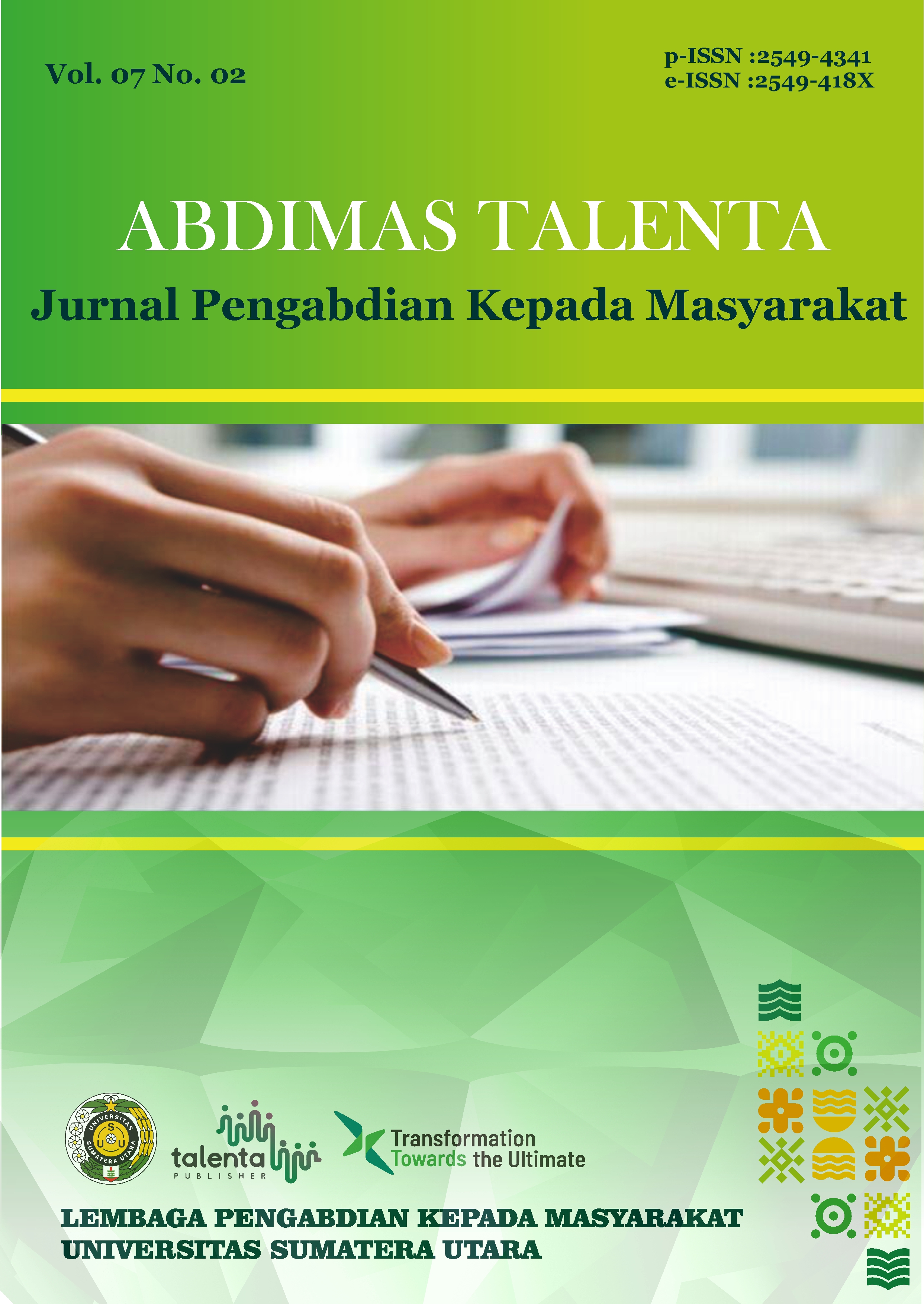Disaster Mitigation Training in Disaster Resistant Village in Tanjung Rejo Village Medan Sunggal Medan City
DOI:
https://doi.org/10.32734/abdimastalenta.v7i2.10399Keywords:
Disaster, MitigationAbstract
The hydrometeorological flood disaster in Indonesia is influenced by climate change and inappropriate land conversion. Mitigation is generally carried out in the context of reducing losses due to the possibility of a disaster, be it loss of life and/or loss of property that will affect human life and activities. This Community Service activity was carried out in the Tanjung Rejo Village, which is located on Jalan Abadi Gang Balai Desa No. 13-B Medan District. The distance from the University of North Sumatra to Tanjung Rejo Village is 3.7 Km via Jl. Dr. Mansyur (about 11 minutes). Tanjung Rejo Sub-district is a sub-district located on lowland with an altitude of 24-37 meters above sea level and an average temperature of around 24°C to 32°C with an average Rainfall of 1,800-2,000 mm/year. In order to define an appropriate and accurate mitigation plan or strategy, it is necessary to carry out a risk assessment. Disaster mitigation activities should be routine and sustainable activities. This means that mitigation activities should have been carried out in the long period prior to disaster activities, which often come sooner than expected, and even have greater intensity than originally thought.
Downloads
Downloads
Published
Issue
Section
License
Copyright (c) 2022 ABDIMAS TALENTA: Jurnal Pengabdian Kepada Masyarakat

This work is licensed under a Creative Commons Attribution-ShareAlike 4.0 International License.
The Authors submitting a manuscript do so on the understanding that if accepted for publication, copyright of the article shall be assigned to Jurnal Abdimas TALENTA as well as TALENTA Publisher Universitas Sumatera Utara as the publisher of the journal.
Copyright encompasses exclusive rights to reproduce and deliver the article in all forms and media. The reproduction of any part of this journal, its storage in databases and its transmission by any form or media, will be allowed only with written permission from Jurnal Abdimas TALENTA.
The Copyright Transfer Form can be downloaded here.
The copyright form should be signed originally and sent to the Editorial Office in the form of original mail or scanned document.












